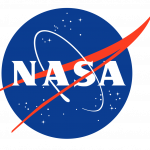
GEOTRACES is an international collaborative project studying marine biogeochemical cycles of trace elements and their isotopes in the ocean. Trace elements, critical for marine life, influence the functions of ocean ecosystems and the global carbon cycle. Elements may also be of specific concern as contaminants. The mission of GEOTRACES is "To identify processes and quantify fluxes that control the distributions of key trace elements and isotopes in the ocean, and to establish the sensitivity of these distributions to changing environmental conditions."
Cafe Thorium has been involved in GEOTRACES using Thorium isotopes to examine the biological carbon pump. Most recently this has involved a cruise from the Alaska to Tahiti between Septemer-November 2018 and from the Aleutians to the North Pole between August-November 2015. These projects are described below in more detail. Data is found both in the right columns for each cruise section and on the DATA page.
Also publicly available are two GEOTRACES Intermediate Data Products - containing data from many GEOTRACES cruises by both the U.S. and international teams.
Schlitzer et al. (2018) GEOTRACES Intermediate Data Product 2017. Chemical Geology, 493, 210-223.
Mawji et al. (2015) GEOTRACES Intermediate Data Product 2014. Marine Chemistry,177 Pt1,1-8.
South Pacific Ocean GP17 OCE-ANT (top)
U.S. GEOTRACES is planning to extend its meridional transect that was begun on the 2018 GP15 Alaska-Tahiti expedition south to the Antarctic ice edge and then east to Chile. This cruise is currently planned in two legs beginning in the Fall of 2022. Information can be found on the US Geotraces website.
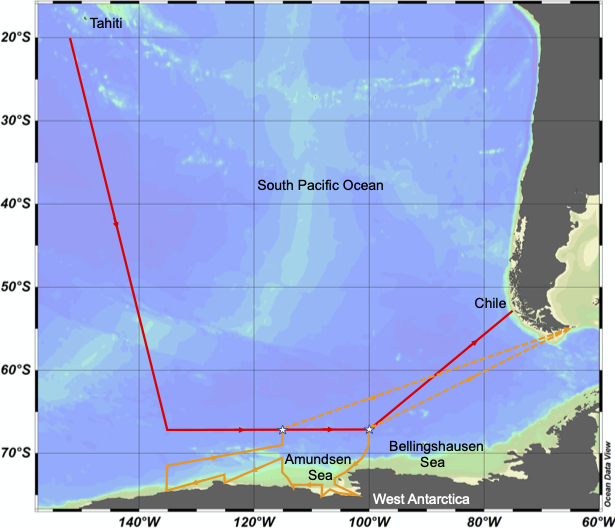
GEOTRACES - Alaska to Tahiti (top)
GP15 - Quantifying Upper Ocean Export and Remineralization of Bioactive and Particle Reactive Trace Elements
R/V Roger Revelle in the Pacific Ocean along 152° W between Alaska and Tahiti. September 18 - November 25, 2018.
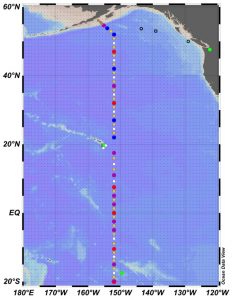
GP15 Geotraces sampling track.
This route allows for the examination of strong margin fluxes, atmospheric dust deposition and the ends of the hydrothermal plumes from the Juan de Fuca Ridge and East Pacific Rise. Find out more about the route on the following blog site: GEOTRACES GP15
Fun links
About MIT-WHOI PhD Student Jennifer Kenyon on the cruise
BLOG by onboard by Science Writer Alex Fox
Arctic GEOTRACES GN01 (top)
Radium and Thorium Isotopes as Natural Geochemical Tracers in the Arctic Ocean
USCGC Healy, Canada and Makarov Basins of the Arctic Ocean; Dutch Harbor to Dutch Harbor. Cruise GN01 Augus 8, 2015- October 12, 2015
Read this article: A Change Has Come in the Arctic by MIT-WHOI PhD Student Lauren Kipp about her experience on the Healy tracking radium in the Arctic.
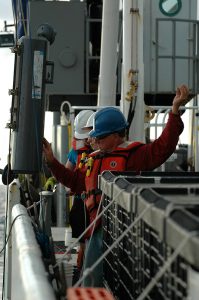
Lowering pumps on Arctic Geotraces
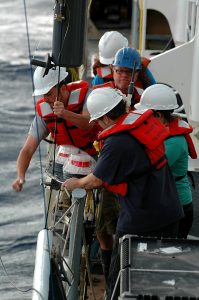
Pump team on Arctic Geotraces
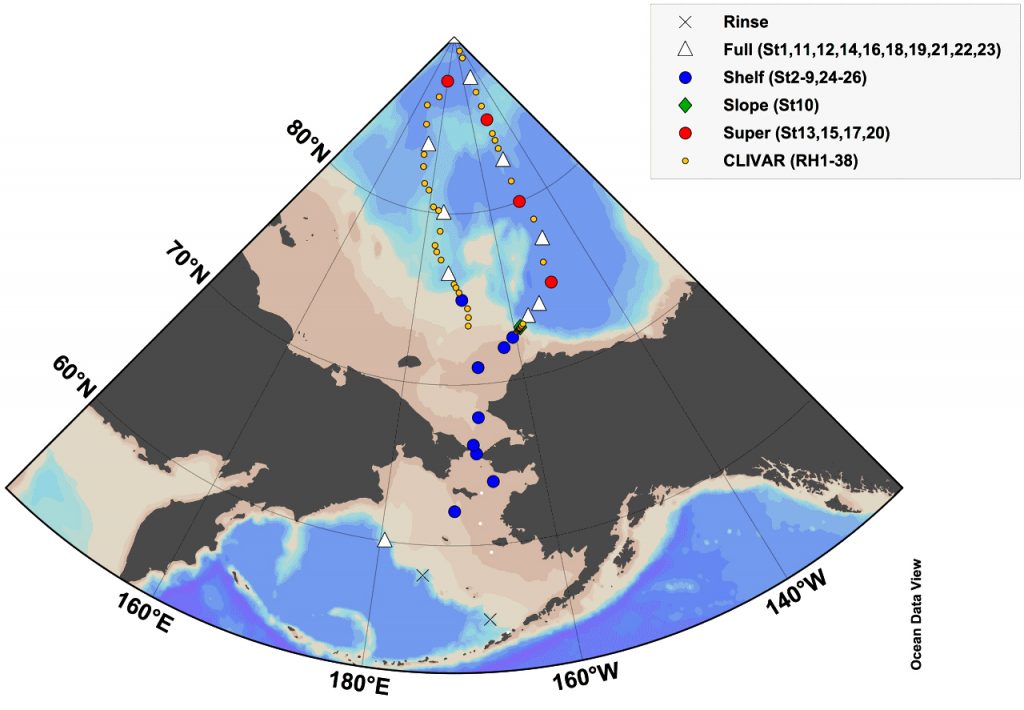
Station map for GN01 cruise
Arctic Collaborators
Matthew Charette (WHOI)
Lauren Kipp (MIT-WHOI)
Related Dataset
Arctic Research Papers
- Black, E.E., Lam, P.J., Lee, J.-M., Buesseler, K.O. (2019) Insights from the 238U-234Th method into the coupling of biological export and the cycling of cadmium, cobalt, and manganese in the Southeastern Pacific Ocean. Global Biogeochemical Cycles, 33:1, 15-36.
- Black, E. (2018) An investigation of basin-scale controls on upper ocean export and remineralization. MIT-WHOI PhD Thesis.
- Onrubia, J.A., Petrova, M.V., Puicorbé, V., Black, E.E., Valk, O., Dufour, A., Hamelin, B., Buesseler, K.O., Masqué, P., Le Moigne, F.A.C, Sonke, J.E., van der Loeff, M.R., Heimbürger-Boavida, L.-E. (2020) Mercury export flux in the Arctic Ocean estimated from 234Th/238U disequilibria (pdf). ACS Earth and Space Chemistry, 4(5), 795-801. DOI: 10.1021/acsearthspacechem.0c00055
East Pacific Zonal Transect (EPZT) (top)
Rates of supply, removal and internal cycling of trace elements and isotopes
GP16-TN303 R/V Thompson October 29-December 18, 2013. Lima Peru to Tahiti between 10°S and 20°S.

U.S. GEOTRACES GP16 water sampling stations in the eastern tropical South Pacific Ocean (by Bowmen et al., 2016, Marine Chemistry)
Funding Agencies
The National Science Foundation under grant No. OCE-1232669 and NASA Earth and Space Science Graduate Fellowship (NNX13AP31H) awarded to Erin Black.
Research Papers
- Black, E.E., Buesseler, K.O., Pike, S.M., Lam, P.J. (2018) 234Th as a tracer of particulate export and remineralization in the southeastern tropical Pacific. Marine Chemistry, 201: 35-50.
North Atlantic Transect (top)
GA03 Subtropical northern Atlantic Ocean
R/V Knorr cruises KN199-04 (Oct. 15-Nov. 4, 2010) & KN204-01 (Nov. 6-Dec. 11, 2011).
The primary cruise design motivation was to improve knowledge of the sources, sinks and internal cycling of Trace Elements and their Isotopes (TEIs) by studying their distributions along a section in the North Atlantic. The North Atlantic has the full suite of processes that affect TEIs, including strong meridional advection, boundary scavenging and source effects, aeolian deposition, and the salty Mediterranean Outflow. The North Atlantic is particularly important as it lies at the "origin" of the global Meridional Overturning Circulation.
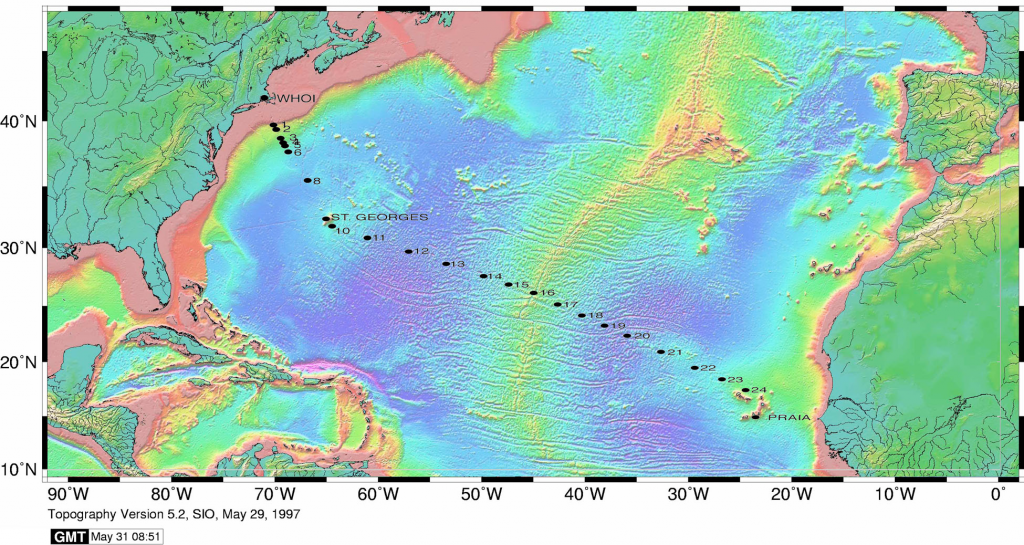
Station locations on the North Atlantic Transect on the R/V Knorr (source: www.bco-dmo.org)
Collaborators
Matthew Charette (WHOI)
Research Papers
- Owens, S.A., Pike, S., Buesseler, K.O. (2015) Thorium-234 as a tracer of particle dynamics and upper ocean export in the Atlantic Ocean. Deep Sea Research Part II: Topical Studies in Oceanography, 116: 42-59.
- Hayes, C.T., et al. (2018) Flux of particulate elements in the North Atlantic Ocean constrained by multiple radionuclides. Global Biogeochemical Cycles, 32(12): 1738-1758.
- Lerner, P., Marchal, O., Lam, P.J., Buesseler, K.O, Charette, M. (2017) Kinetics of thorium and particle cycling along the U.S. Geotraces North Atlantic Transect. Deep Sea Research Part I: Oceanographic Research Papers, 125: 106-128.
- Lerner, P. et al. (2016) Testing models of thorium and particle cycling in the ocean using data from station GT11-22 of the U.S. Geotraces North Atlantic section. Deep Sea Research Part I: Oceanographic Research Papers, 113: 57-79.

